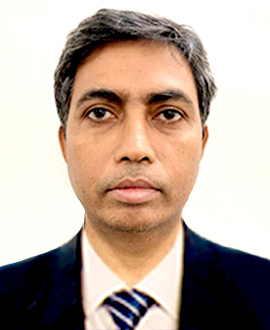CAD Operation Level-3 Suggestion V-3
Written Test CAD Operation Level-3 Suggestion V-3 by Job Edu BD
First, test yourself with the following MCQs, if you can’t do it, you can check the answer by clicking on the answer button.
CAD Operation Level-3 Suggestion V-3
1. When using rotate tool the angle of rotation is the following direction?
- Anti-clockwise
- Clockwise.
- Circle
- None of above.
2. Using switch board inside the bathroom authenticate
- Yes
- No
3. W.S pipe used for water supply.
- Yes
- No
4. What is the keyboard shortcut of polygon command?
- Rectangle
- Pol
- Circle
- None of above
5. What is the keyboard shortcut of array command?
- Rectangle
- Pol
- Ar
- None of above
6. What is the keyboard shortcut in toggle isoplane mode?
- F5
- F7
- F8
- F12
7. What is the keyboard shortcut of hyperlink command?
- Alt+K
- Shift+K
- Ctrl+K
- Ctrl+W
8. What is the keyboard shortcut of block command?
- A
- B
- C
- D
9. What is the minimum allowable number of layers in a drawing?
- 1
- 2
- 3
- 4
10. How many categories in the architectural symbols?
- 1
- 2
- 3
- 4
11. How many basic equations hold for a structure?
- Two
- Three
- Four
- Five
12. Which command convert discrete objects in polyline?
- Offset
- Join
- Qselect
- None of above
13. What are the types of structural design?
- Two
- Three
- Four
- Five
Short Questions-
14. What do you mean by G.L & P.L ?
15. Explain privacy Legislation?
16. What is function key for ortho?
17. FM Meaning-
18. Define Section.
19. What is the abbreviation of SOP?
20. What do you understand by waste material disposal?
21. Describe the Privacy Legislation.
22. What is Stirrup?
23. What is Lintel?
24. Differentiate between the internal department and the external organization.
25. What is the industry code practice?
26. Copy Right:
27. Write down the Function Of explode command.
28. State Farming/Layout Plan.
29. Describe the intellectual property.
30. Differentiate the occupation & profession.
1. When using rotate tool the angle of rotation is the following direction?
B. Clockwise.
2. Using switch board inside the bathroom authenticate
B. No
3. W.S pipe used for water supply.
B. No
4. What is the keyboard shortcut of polygon command?
B. Pol
5. What is the keyboard shortcut of array command?
C. Ar
6. What is the keyboard shortcut in toggle isoplane mode?
A. F5
7. What is the keyboard shortcut of hyperlink command?
C. Ctrl+K
8. What is the keyboard shortcut of block command?
B. B
9. What is the minimum allowable number of layers in a drawing?
A. 1
10. How many categories in the architectural symbols?
D. 4
11. How many basic equations hold for a structure?
B. Three
12. Which command convert discrete objects in polyline?
B. Join
13. What are the types of structural design?
B. Three
Short Questions-
14. What do you mean by G.L & P.L ?
Ans: G.L. – Ground Level. The term ‘Ground Floor’ or ‘Ground Level’ is used to refer to this level of a building that is at street/ground level.
‘গ্রাউন্ড ফ্লোর’ বা ‘গ্রাউন্ড লেভেল’ শব্দটি রাস্তার/গ্রাউন্ড লেভেলে অবস্থিত বিল্ডিংয়ের এই স্তরটিকে বোঝাতে ব্যবহৃত হয়।
P.L – Plinth Level. The level at which Substructure ends and superstructure starts is called Plinth level. It is the part of the superstructure between natural ground level and Finished floor level. the plinth is provided to restrict the seepage of stormwater and rainwater into the building.
যে স্তরে সাবস্ট্রাকচার শেষ হয় এবং সুপারস্ট্রাকচার শুরু হয় তাকে প্লিন্থ লেভেল বলে। এটি প্রাকৃতিক গ্রাউন্ড লেভেল এবং ফিনিশড ফ্লোর লেভেলের মধ্যে সুপারস্ট্রাকচারের অংশ। ভবনে ঝড়ের পানি এবং বৃষ্টির পানির প্রবেশ সীমাবদ্ধ করার জন্য প্লিন্থ দেওয়া হয়।
15. Explain privacy Legislation?
Ans: privacy Legislation হল আইনের একটি অংশ যা ব্যক্তিগতভাবে সনাক্তযোগ্য তথ্য, ব্যক্তিগত স্বাস্থ্যসেবা তথ্য এবং ব্যক্তিদের আর্থিক তথ্য, যা সরকারী বা বেসরকারী সংস্থা দ্বারা সংগ্রহ, নিয়ন্ত্রন, সংরক্ষণ এবং ব্যবহার নিয়ে কাজ করে।
16. What is function key for ortho?
Ans. F8 – Ortho – Locks cursor movement to horizontal or vertical.
17. FM Meaning-
Ans: Fineness modulus ( সূক্ষ্মতা মডুলাস )The Fineness Modulus (FM) is an empirical figure obtained by adding the total percentage of the sample of an aggregate retained on each of a specified series of sieves, and dividing the sum by 100. Sieves sizes are: 150-μm (No)
(ফাইনেনেস মডুলাস (এফএম) হ’ল একটি অনুশীলনীয় চিত্র যা নির্দিষ্ট পরিমাণে চালিত প্রত্যেকটির উপর রক্ষিত সামগ্রীর নমুনার মোট শতাংশ যোগ করে এবং যোগফলকে 100 দ্বারা ভাগ করে দেয় .সেভের আকারগুলি: 150-μm (না No.)
18. Define Section.
Ans: Section হলো একটি দালানের ভিত্তির তলা থেকে ছাদ উপস্থিত প্যারাপেট দেয়ালের উপর প্রান্ত পর্যন্ত কর্তীত দৃশ্য অংকন।
19. What is the abbreviation of SOP?
Answer: Standard Operating Procedures.
20. What do you understand by waste material disposal?
Answer: Waste material disposal is the system to remove or dispose or clean the waste materials or garbage.
21. Describe the Privacy Legislation.
Ans: Privacy Legislation means all laws and regulations, including (without limitation) the laws and regulations of the European Union, the European Economic Area and their member states, which are applicable to the processing of Personal Data under this Agreement, including (without limitation) the EU General Data Protection Regulation (2016/679) (“GDPR”);
গোপনীয়তা আইন মানে ইউরোপীয় ইউনিয়ন, ইউরোপীয় অর্থনৈতিক এলাকা এবং তাদের সদস্য রাষ্ট্রগুলির আইন ও প্রবিধান সহ (সীমাবদ্ধতা ছাড়া) সমস্ত আইন ও প্রবিধান, যা এই চুক্তির অধীনে ব্যক্তিগত ডেটা প্রক্রিয়াকরণের জন্য প্রযোজ্য, সহ (সীমাবদ্ধতা ছাড়া) ইইউ জেনারেল ডেটা প্রোটেকশন রেগুলেশন (2016/679) (“GDPR”);
22. What is Stirrup?
Ans: A stirrup refers to a closed loop of reinforcement bar. Its main purpose is to hold the reinforcement bars together in an RCC structure. When used in a column, they provide lateral support to the main reinforcement bars to prevent buckling.
একটি স্টিরাপ শক্তিবৃদ্ধি বারের একটি বন্ধ লুপ বোঝায়। এর মূল উদ্দেশ্য হল একটি RCC কাঠামোতে শক্তিশালীকরণ বারগুলিকে একসাথে রাখা। যখন একটি কলামে ব্যবহার করা হয়, তখন তারা প্রধান শক্তিবৃদ্ধি বারগুলিকে পাশ্বর্ীয় সমর্থন প্রদান করে যাতে বাকলিং প্রতিরোধ করা হয়।
23. What is Lintel?
Ans: In construction, a lintel is a beam placed across the top of an opening in a wall. Used above empty spaces like entrances and windows in buildings, lintels support the weight of the structures above them.
নির্মাণের ক্ষেত্রে, একটি লিন্টেল হল একটি প্রাচীরের একটি খোলার শীর্ষ জুড়ে রাখা একটি মরীচি। ভবনগুলিতে প্রবেশদ্বার এবং জানালার মতো খালি জায়গাগুলির উপরে ব্যবহৃত, লিন্টেলগুলি তাদের উপরের কাঠামোর ওজনকে সমর্থন করে।
24. Differentiate between the internal department and the external organization.
Ans: অভ্যন্তরীণ যোগাযোগ ঘটে যখন একটি সংস্থার সদস্যরা একে অপরের সাথে তথ্য বিনিময় করে। বাহ্যিক যোগাযোগ সঞ্চালিত হয় যখন সেই সদস্যরা বাইরের পক্ষের সাথে যোগাযোগ করে। কার্যকরী অভ্যন্তরীণ এবং বাহ্যিক যোগাযোগ উভয়ই একটি ব্যবসার সাফল্যের জন্য গুরুত্বপূর্ণ।
25. What is the industry code practice?
Ans: Industry code practice হল প্রয়োগযোগ্য নিয়ম এবং ব্যবস্থা যা শিল্পের আচরণ, এর কর্মীদের এবং ভোক্তাদের সাথে তাদের সম্পর্ক নিয়ন্ত্রণ করে।
26. Copy Right:
Ans: Copyright refers to the legal right of the owner of intellectual Property. In simpler terms, copyright is the right to copy.
(কপিরাইট বলতে বৌদ্ধিক সম্পত্তির মালিকের আইনী অধিকারকে বোঝায়। সহজ কথায় কপিরাইট হ’ল অনুলিপি করার অধিকার)
27. Write down the Function Of explode command.
Ans: Breaks a compound object into its component object.
28. State Farming/Layout Plan.
Ans: যে প্লানের মধ্যে প্লটের সীমানা,প্লটের কাঠামো মেইন রাস্তা গ্যাস পাইপ বিদুত্যের ব্যাবস্থা,পানি নিষ্কাশন ব্যাবস্থা দেখানো থাকে,তাকে Layout Plan বলে।
29. Describe the intellectual property.
Ans. Intellectual property (IP) refers to creations of the mind, such as inventions; literary and artistic works; designs; and symbols, names and images used in commerce.
30. Differentiate the occupation & profession.
Ans: Occupation is an activity undertaken by the person to earn his livelihood. It can be business,
(পেশা একটি জীবিকা নির্বাহের জন্য ব্যক্তি কর্তৃক গৃহীত একটি ক্রিয়াকলাপ। এটি ব্যবসা হতে পারে)
Profession or employment that a person undertakes to make money. Profession is an activity that requires specialized training, knowledge, qualification and skills
(পেশা বা কর্মসংস্থান যা একজন ব্যক্তি অর্থোপার্জনের উদ্যোগ নেয়। পেশা এমন একটি ক্রিয়াকলাপ যা বিশেষ প্রশিক্ষণ, জ্ঞান, যোগ্যতা এবং দক্ষতা প্রয়োজন)

Rabindra chandra das
Diploma in Architecture
In-Charge (CAD Operation)
Instructor
Bangladesh-German Technical Training Center
Mirpur-2, Dhaka-1216
Try Now: Computer Operation Level-3 Vol-5
"You will pass just by asking the mentioned questions, it's not like that at all, but chances are upto 80% to get common. This is just a suggestion. This question is not copied from any board question"
Computer-aided design (CAD) is the use of computers (or workstations) to aid in the creation, modification, analysis, or optimization of a design. This software is used to increase the productivity of the designer, improve the quality of design, improve communications through documentation, and to create a database for manufacturing. Designs made through CAD software help protect products and inventions when used in patent applications. CAD output is often in the form of electronic files for print, machining, or other manufacturing operations. The terms computer-aided drafting (CAD) and computer-aided design and drafting (CADD) are also used.
Its use in designing electronic systems is known as electronic design automation (EDA). In mechanical design it is known as mechanical design automation (MDA), which includes the process of creating a technical drawing with the use of computer software.
CAD software for mechanical design uses either vector-based graphics to depict the objects of traditional drafting, or may also produce raster graphics showing the overall appearance of designed objects. However, it involves more than just shapes. As in the manual drafting of technical and engineering drawings, the output of CAD must convey information, such as materials, processes, dimensions, and tolerances, according to application-specific conventions.
CAD may be used to design curves and figures in two-dimensional (2D) space; or curves, surfaces, and solids in three-dimensional (3D) space.
CAD is an important industrial art extensively used in many applications, including automotive, shipbuilding, and aerospace industries, industrial and architectural design (building information modeling), prosthetics, and many more. CAD is also widely used to produce computer animation for special effects in movies, advertising and technical manuals, often called DCC digital content creation. The modern ubiquity and power of computers means that even perfume bottles and shampoo dispensers are designed using techniques unheard of by engineers of the 1960s. Because of its enormous economic importance, CAD has been a major driving force for research in computational geometry, computer graphics (both hardware and software), and discrete differential geometry.
The design of geometric models for object shapes, in particular, is occasionally called computer-aided geometric design (CAGD).
Overview
Computer-aided design is one of the many tools used by engineers and designers and is used in many ways depending on the profession of the user and the type of software in question.
CAD is one part of the whole digital product development (DPD) activity within the product lifecycle management (PLM) processes, and as such is used together with other tools, which are either integrated modules or stand-alone products, such as:
- Computer-aided engineering (CAE) and finite element analysis (FEA, FEM)
- Computer-aided manufacturing (CAM) including instructions to computer numerical control (CNC) machines
- Photorealistic rendering and motion simulation
- Document management and revision control using product data management (PDM)
CAD is also used for the accurate creation of photo simulations that are often required in the preparation of environmental impact reports, in which computer-aided designs of intended buildings are superimposed into photographs of existing environments to represent what that locale will be like, where the proposed facilities are allowed to be built. Potential blockage of view corridors and shadow studies are also frequently analyzed through the use of CAD.
Types

There are several different types of CAD, each requiring the operator to think differently about how to use them and design their virtual components in a different manner. Virtually all of CAD tools rely on constraint concepts that are used to define geometric or non-geometric elements of a model.
2D CAD
There are many producers of the lower-end 2D sketching systems, including a number of free and open-source programs. These provide an approach to the drawing process where scale and placement on the drawing sheet can easily be adjusted in the final draft as required, unlike in hand drafting.
3D CAD
3D wireframe is an extension of 2D drafting into a three-dimensional space. Each line has to be manually inserted into the drawing. The final product has no mass properties associated with it and cannot have features directly add to it, such as holes. The operator approaches these in a similar fashion to the 2D systems, although many 3D systems allow using the wireframe model to make the final engineering drawing views.
3D “dumb” solids are created in a way analogous to manipulations of real-world objects. Basic three-dimensional geometric forms (e.g., prisms, cylinders, spheres, or rectangles) have solid volumes added or subtracted from them as if assembling or cutting real-world objects. Two-dimensional projected views can easily be generated from the models. Basic 3D solids do not usually include tools to easily allow the motion of the components, set their limits to their motion, or identify interference between components.
There are several types of 3D solid modeling
- Parametric modeling allows the operator to use what is referred to as “design intent”. The objects and features are created modifiable. Any future modifications can be made by changing on how the original part was created. If a feature was intended to be located from the center of the part, the operator should locate it from the center of the model. The feature could be located using any geometric object already available in the part, but this random placement would defeat the design intent. If the operator designs the part as it functions, the parametric modeler is able to make changes to the part while maintaining geometric and functional relationships.
- Direct or explicit modeling provide the ability to edit geometry without a history tree. With direct modeling, once a sketch is used to create geometry it is incorporated into the new geometry, and the designer only has to modify the geometry afterward without needing the original sketch. As with parametric modeling, direct modeling has the ability to include the relationships between selected geometry (e.g., tangency, concentricity).
- Assembly modelling is a process which incorporates results of the previous single-part modelling into a final product containing several parts. Assemblies can be hierarchical, depending on the specific CAD software vendor, and highly complex models can be achieved (e.g. in building engineering by using computer-aided architectural design software)
Freeform CAD
Top-end CAD systems offer the capability to incorporate more organic, aesthetic and ergonomic features into the designs. Freeform surface modeling is often combined with solids to allow the designer to create products that fit the human form and visual requirements as well as they interface with the machine.
Post review
Finding Your Post
CAD Operation Level-3 Suggestion V-3 NSQF / NTVQF CAD Operation Level-3 Suggestion V-2, NSQF NTVQF, CAD Operation Level-3 Suggestion V-2, Job Edu BD, NSDA BTEB, NSDA / BTEB Suggestion Vol-1 NSQF NTVQF NADA BTEB CAD Operation Level-3 Suggestion V-3
CAD Operation Level-3 Suggestion V-3 NSQF / NTVQF CAD Operation Level-3 Suggestion V-2, NSQF NTVQF, CAD Operation Level-3 Suggestion V-2, Job Edu BD, NSDA BTEB, NSDA / BTEB Suggestion Vol-1 NSQF NTVQF NADA BTEB CAD Operation Level-3 Suggestion V-3
CAD Operation Level-3 Suggestion V-3 NSQF / NTVQF CAD Operation Level-3 Suggestion V-2, NSQF NTVQF, CAD Operation Level-3 Suggestion V-2, Job Edu BD, NSDA BTEB, NSDA / BTEB Suggestion Vol-1 NSQF NTVQF NADA BTEB CAD Operation Level-3 Suggestion V-3



